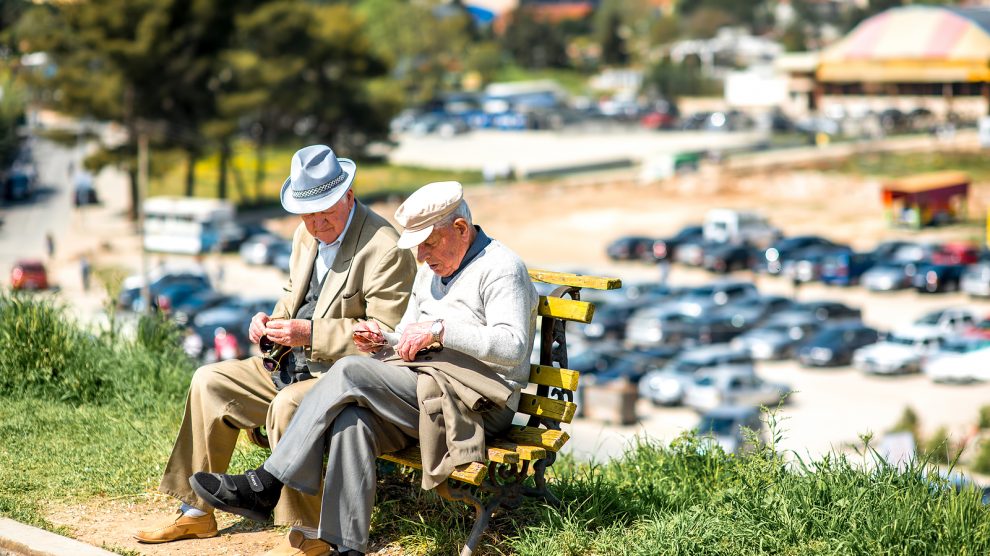Albania’s economy enjoyed solid growth in 2022 and the lowest inflation in all of CESEE. With booming construction and tourism sectors, 2023 is set to be another year of progress.
Albania has emerged from one of the rockier economic liberalisations in emerging Europe. Enver Hoxha led one of the world’s most isolated communist regimes for forty years, siding with Stalin in the Yugoslav-Soviet split, with Mao in the Sino-Soviet split over Khrushchev’s de-Stalinisation and ‘revisionism’, before cutting ties with China when Mao welcomed Richard Nixon in what Hoxha perceived as an alliance with American imperialism. At home, Hoxha cultivated a cult of personality to rival that of North Korea’s Kim Jong-un.
- The changing face of Tirana
- Western Balkans show resilience despite slowing growth and continued price rises
- Greek villages and hidden submarines: Postcards from the Albanian Riviera
When Hoxha died in 1985, Albania was the third-poorest country in the world and had an average income of just 15 US dollars a month. Much of the country was food insecure, and the country’s geopolitical isolation left the rural population using agricultural technology from the 1920s.
Communism fell in 1991, but troubles continued through the 1990s. Two-thirds of Albanians invested in pyramid schemes whose liabilities amounted to almost half of the country’s gross domestic product (GDP). After these schemes collapsed in late 1996, the country was engulfed in a seven-month period of civil unrest during which 2,000 people were killed. Large numbers of Albanians emigrated to Greece and Italy in search of stability and economic opportunity.
Two and a half decades later, Albania is one of the continent’s most resilient economies: a remarkable feat. As the economic fallout of the war in Ukraine has caused widespread stagnation and high inflation across Europe, the Albanian lek grew stronger against the euro and the in-country production of hydropower, fruits, and vegetables insulated Albanians from rising energy and food prices.
According to April forecasts by the Vienna Institute for International Economic Studies (wiiw), Albania’s inflation rate only reached 6.7 per cent—the lowest in all of Central, Eastern, and South-eastern Europe (CESEE)—and it enjoyed 4.8 per cent GDP growth in 2022.
Constructing growth
The tourism and construction sectors have driven much of this growth. 2022 saw a 48.5 per cent increase from 2021 in income from tourist arrivals as more visitors flocked to the country’s mountains, villages, and riviera on the Ionian Sea. This surge in tourism, in turn, boosts construction.
“Since the collapse of communism, Albania’s construction industry has emerged as a pivotal driver of its economic growth,” Dr Ravik Mima, author of wiiw’s April forecast for Albania, tells Emerging Europe.
In addition to a mass emigration from Albania, the years after the fall of communism saw mass migration within the country from rural areas to its capital, Tirana. Tirana grew, and continues to grow by 30,000 people each year, creating a need for more housing.
“For the first two decades, private construction boomed, supported primarily by the rising income and savings of residents, augmented by the robust financial intermediation provided by the banking sector,” says Dr Mima. “Additionally, remittances from the pioneer generation of post-communist emigrants significantly contributed to this growth.”
Sprawl outpaced new public transportation infrastructure, leading to increased private car ownership, traffic, and air pollution. City officials have made it a priority to stop sprawl and re-concentrate construction into Tirana’s core in the Tirana 2030 initiative. Today, cranes and skyscrapers in varying stages of completion fill the city’s centre.
“In recent years, the demand for housing has been supplanted by other influential factors,” Dr Mima says. “Firstly, a new trend has emerged among affluent households, both resident and non-resident – including not only the Albanian diaspora but also foreign investors – who are showing an increasing predilection for owning multiple homes as investment assets in a burgeoning housing market. Secondly, the tourism sector, having undergone substantial growth over the past decade and showing promising potential for further expansion, has spurred non-residential construction projects like hotels and resorts.”
Foreign investment in the real estate sector totalled 291 million euros in 2022, a 52 per cent increase year-on-year. The Vienna Institute also estimates net remittances increased by 10 per cent nominally in 2022 to 834 million euros, although they declined as a share of GDP to 4.5 per cent.
The Albanian government also committed significant resources to construction between 2020 and 2022 as part of reconstruction projects in the aftermath of an earthquake in 2019. Dr Mima says over one billion euros sourced from the state budget and approximately 300 million euros from additional international grants have gone towards these initiatives.

Rising wages
While Albania’s median income lags behind those of EU countries, employment and salaries are on the rise.
“In recent years, the Albanian labour market has been under considerable strain due to robust economic growth coupled with high rates of emigration,” Dr Mima continues. “The economic turmoil induced by the 2020 pandemic did not significantly dampen employment figures, primarily due to an uptick in labour force engagement, most notably among women. This situation led to a record drop in unemployment rates and a substantial rise in real average wages across the majority of the private sectors.”
In April 2023, the government raised the minimum wage.
“The government anticipates that an increase in the minimum wage will serve a dual purpose,” adds Dr Mima. “Firstly, it is expected to facilitate a more equitable distribution of economic gains, thereby reducing income disparities. Secondly, it aims to stimulate investments in enhancing labour productivity, moving away from the traditional dependence on a low-cost labour model, and transitioning towards a more sustainable, high-productivity economic structure.”
The recent increase in minimum wage aligns with the overall labour market trajectory, Dr Mima says. “Over the past two years, the minimum wage has seen a remarkable increase of about 50 per cent, culminating in a wage that constitutes roughly 60 per cent of the average Albanian wage. This ratio is high compared to the average wages in most developed economies, not to mention for emerging economies of a smaller scale like Albania.”
It remains to be seen however how Albania’s textile and agriculture sectors—both reliant on low-skilled labour—will respond as the price of labour increases.
Unlike many news and information platforms, Emerging Europe is free to read, and always will be. There is no paywall here. We are independent, not affiliated with nor representing any political party or business organisation. We want the very best for emerging Europe, nothing more, nothing less. Your support will help us continue to spread the word about this amazing region.
You can contribute here. Thank you.







Add Comment